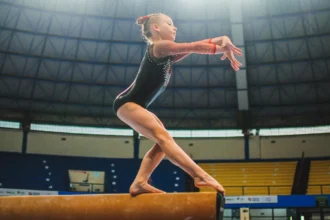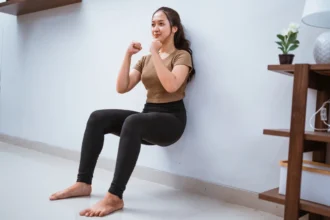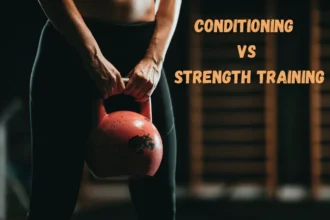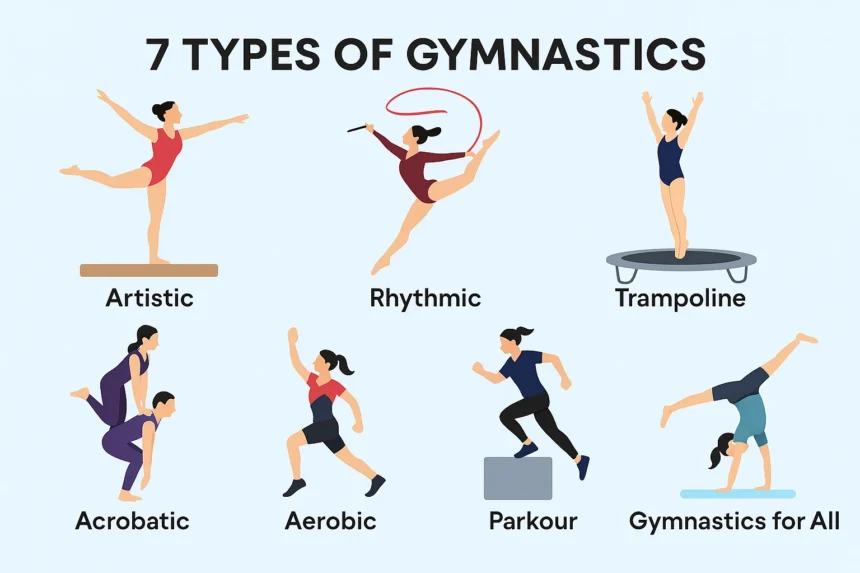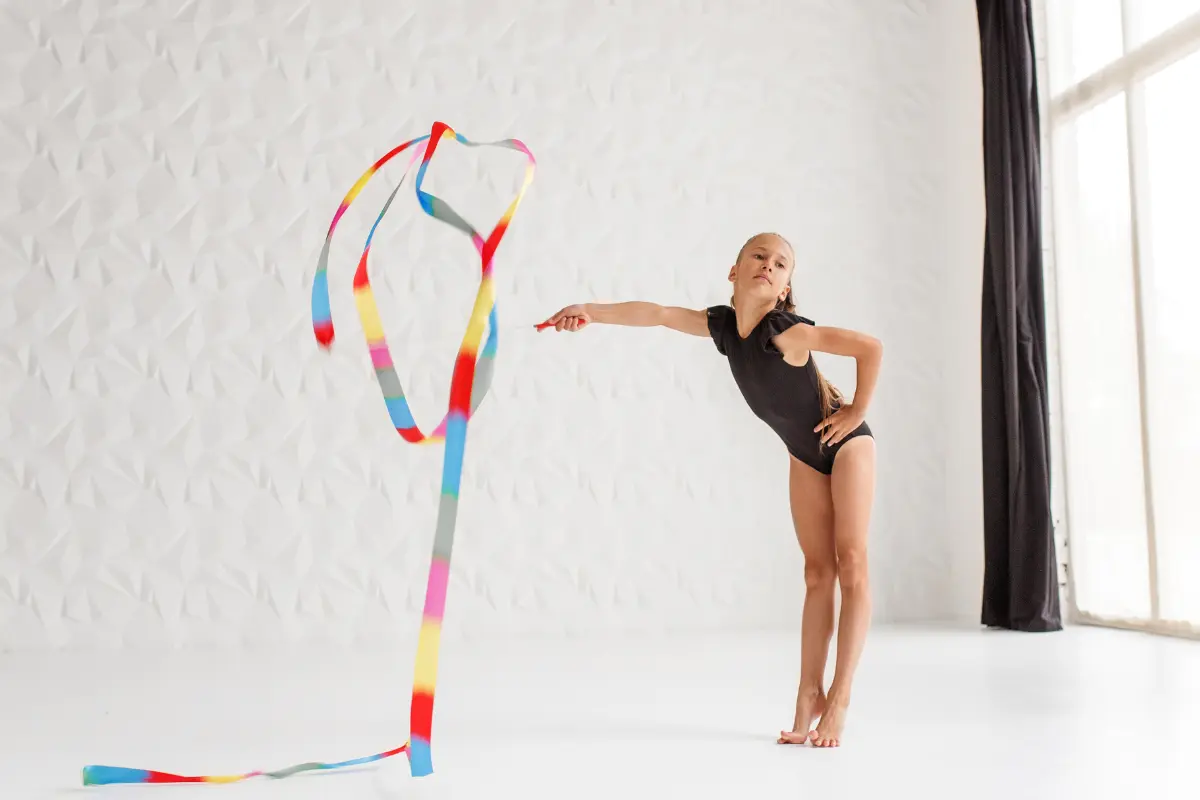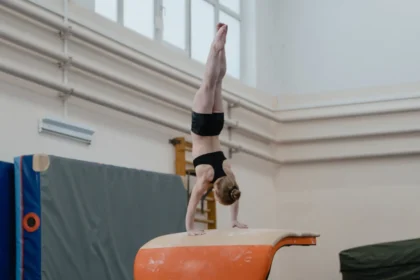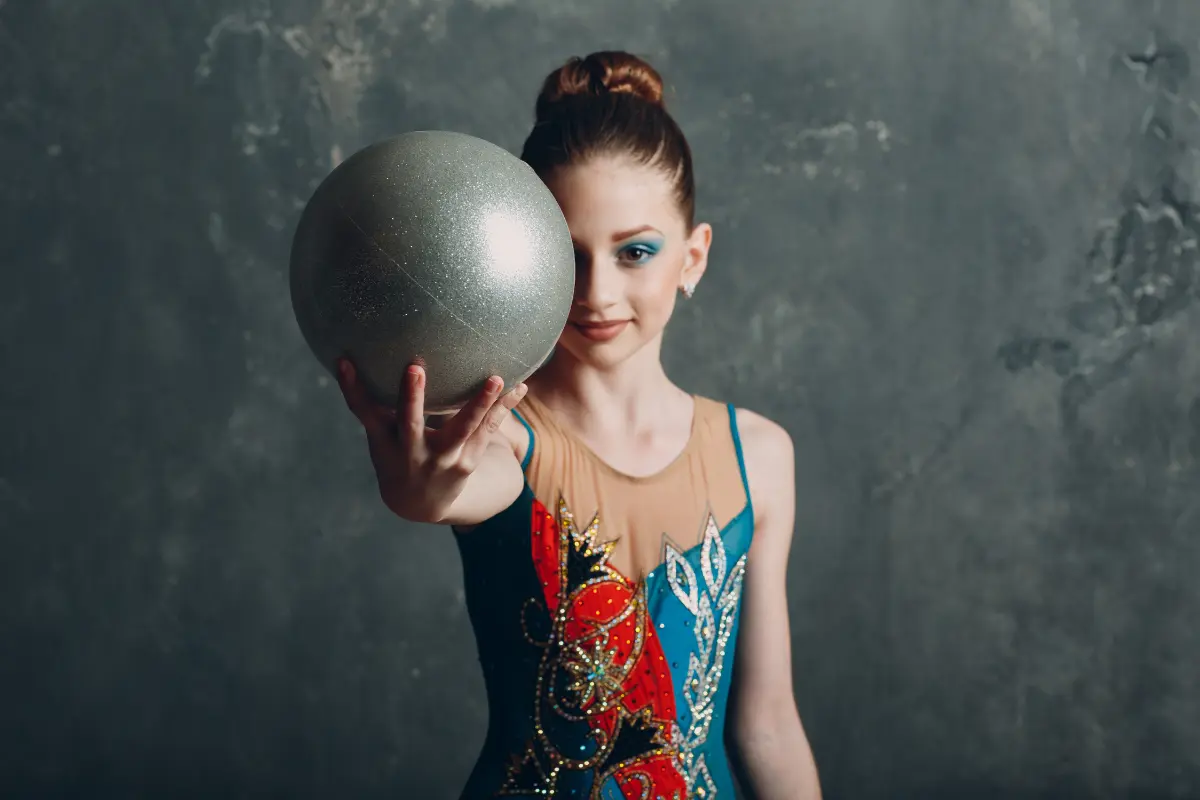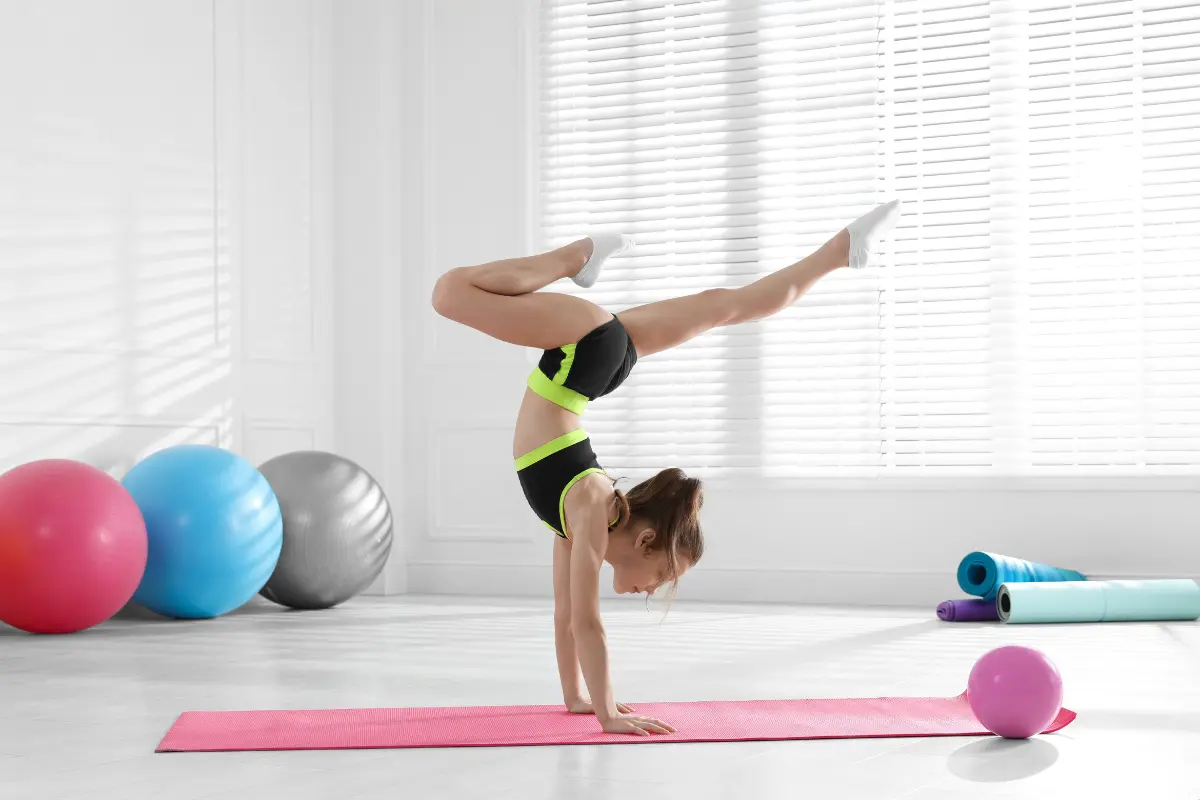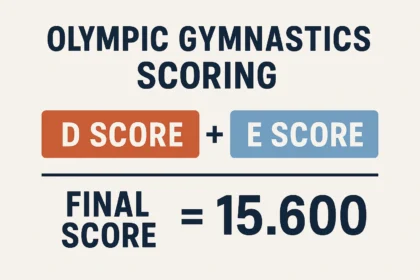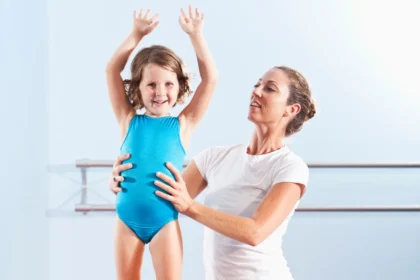Here’s your improved full article with smoother flow, clearer transitions, and more natural tone—while keeping all your original details intact:
Contents
Artistic Gymnastics
Artistic gymnastics is the type most people picture when they hear the word “gymnastics.” It’s the most popular and widely recognized discipline—especially at the Olympic Games—and combines explosive power, graceful movement, and precise technique.
Athletes perform short routines on different apparatuses, mixing flips, twists, balances, and dance-like transitions into a smooth performance. Judges score routines based on both how difficult they are and how well they’re executed.
Artistic gymnastics is divided into two categories:
- WAG (Women’s Artistic Gymnastics) – includes four events: vault, uneven bars, balance beam, and floor exercise.
- MAG (Men’s Artistic Gymnastics) – includes six events: floor exercise, pommel horse, still rings, vault, parallel bars, and horizontal bar.
In the U.S., most gymnasts start in the USA Gymnastics Development Program, which begins at Level 1. The early levels (1–5) are compulsory, meaning all athletes perform the same routines. From Level 6 onward, routines become optional and more personalized. Those who reach Level 10 can go on to test for elite, the pathway to national and international competition.
Best for: Kids and teens who love to tumble, perform, and learn challenging new skills. Artistic gymnastics builds strength, flexibility, confidence, and focus.
Rhythmic Gymnastics
Rhythmic gymnastics blends ballet, dance, and acrobatics—performed entirely on the floor with hand-held apparatus. There are no flips or beams here. Instead, gymnasts perform choreographed routines to music using ribbons, hoops, balls, clubs, or rope.
This discipline is only competed by women at the Olympic level and features both individual and group routines.
The five rhythmic apparatus are:
- Ribbon – long, flowing fabric that creates spirals and circles.
- Hoop – rolled, spun, and tossed through space with elegant patterns.
- Ball – balanced, bounced, or rolled across the body.
- Clubs – juggled and swung rhythmically.
- Rope – used for skipping, swings, and footwork (mainly in junior levels).
Routines emphasize flexibility, timing, musical interpretation, and seamless apparatus control. There’s no tumbling—just expressive, dance-like motion.
In the U.S., rhythmic gymnastics follows its own USA Gymnastics levels, often starting at Level 3 and progressing to elite.
Best for: Girls who love dance, music, and graceful performance. Perfect for those with strong flexibility and artistic flair.
Trampoline Gymnastics
Trampoline gymnastics is all about airtime, control, and spectacular flips. Gymnasts bounce high into the air on a competition-grade trampoline and perform routines filled with twists, flips, and combinations—all while staying in perfect alignment.
There are several event types:
- Individual Trampoline – 10 connected skills performed in mid-air with no breaks.
- Synchronized Trampoline – two athletes perform the same routine side by side.
- Double Mini-Trampoline (DMT) – a sprint, two flips on a mini trampoline, and a landing.
- Tumbling (Power Tumbling) – high-speed tumbling down a spring runway (also treated as a separate discipline in some competitions).
Trampoline gymnastics builds incredible body awareness, timing, and leg power. Even the smallest mistake in form can throw off an entire routine.
In the U.S., athletes train through the Trampoline & Tumbling (T&T) program. Beginners start with seat drops and front flips, eventually moving on to twisting and complex aerial skills.
Best for: High-energy athletes who love jumping, flipping, and flying. Great for kids with strong coordination and a fearless mindset.
Acrobatic Gymnastics (Acro)
Acrobatic gymnastics—or Acro—is all about teamwork, trust, and stunning partner stunts. Instead of competing solo, gymnasts work in pairs or groups, combining dance, tumbling, and acrobatic skills like lifts, throws, and human pyramids.
There are five group types:
- Women’s Pair
- Men’s Pair
- Mixed Pair
- Women’s Group (three gymnasts)
- Men’s Group (four gymnasts)
Each team performs three types of routines:
- Balance – slow, controlled holds and partner poses.
- Dynamic – throws, catches, and flight elements.
- Combined – includes both balance and dynamic elements.
Unlike artistic gymnastics, Acro routines rely on chemistry, timing, and mutual support. Smaller gymnasts (tops) are often lifted by stronger partners (bases), with an optional middle in larger groups.
Acro is governed by FIG and supported in the U.S. by USA Gymnastics’ Acro program.
Best for: Gymnasts who love performing as a team, enjoy choreography, and have strong balance and trust in others.
Aerobic Gymnastics
Aerobic gymnastics—also called Sport Aerobics—is the most energetic and fast-paced of all the disciplines. These routines are packed with high knees, jumps, push-ups, turns, and powerful movements, all performed to upbeat music.
There are four formats:
- Individual – solo routines
- Mixed Pair – one male and one female
- Trio – three gymnasts
- Group – five gymnasts performing in sync
Each routine is about 90 seconds long and judged on difficulty, execution, and artistic performance. There’s no flipping or apparatus—just nonstop motion, stamina, and strong rhythm.
In the U.S., aerobic gymnastics is less common but growing. Many participants come from dance, cheer, or fitness backgrounds.
Best for: Athletes who love fast movement, music, and a challenge. Great for kids and teens with endless energy and a passion for performing.
FIG Parkour
FIG Parkour is a modern take on gymnastics that draws from the urban sport of parkour. Instead of formal routines, gymnasts navigate an obstacle course using jumps, vaults, flips, and creative movement. It’s all about speed, flow, and using the environment in smart, skillful ways.
There are two main competition types:
- Speed Run – Get through the course as fast as possible.
- Freestyle – Perform tricks and combinations for judges, scored on creativity and difficulty.
Courses vary between competitions and include features like walls, rails, platforms, and bars. FIG Parkour was officially added in 2018, and international events (like the World Championships) now draw top athletes from around the globe.
It follows its own Code of Points and includes both men’s and women’s events.
Best for: Movers who love adventure, creativity, and pushing boundaries. Perfect for kids who love climbing, running, and problem-solving.
Gymnastics for All
Gymnastics for All is the most open and inclusive discipline—no scores, no pressure, just movement, fun, and fitness for everyone. It includes recreational gymnastics, performance groups, and team events for all ages.
Popular activities include:
- Recreational classes – for children and adults
- TeamGym – choreographed group routines with tumbling and dance
- World Gymnaestrada – a global festival of non-competitive gymnastics
- Adult gymnastics – strength, flexibility, and fun without competition
Gymnastics for All focuses on participation, creativity, and physical literacy. It’s the entry point for many young gymnasts and a lifelong option for those who just want to move and stay healthy.
Best for: Everyone. It’s ideal for kids trying gymnastics for the first time, adults looking to stay active, or families who want to participate together.
Simple Comparison Table
| Type | Focus | Best For |
|---|---|---|
| Artistic | Flips, strength, routines on apparatus | Kids and teens who love to tumble and compete |
| Rhythmic | Dance and flexibility with hand apparatus | Girls who enjoy music, dance, and performance |
| Trampoline | High jumps and aerial tricks | Energetic kids who love bouncing and flipping |
| Acrobatic (Acro) | Partner work, lifts, throws, and teamwork | Gymnasts who enjoy performing with others |
| Aerobic | Fast-paced moves with music and energy | High-energy performers who love rhythm and fitness |
| FIG Parkour | Obstacle courses, creative movement | Adventurous kids who like climbing and action |
| Gymnastics for All | Fun, fitness, and group participation | Anyone of any age looking to move and enjoy gymnastics |


